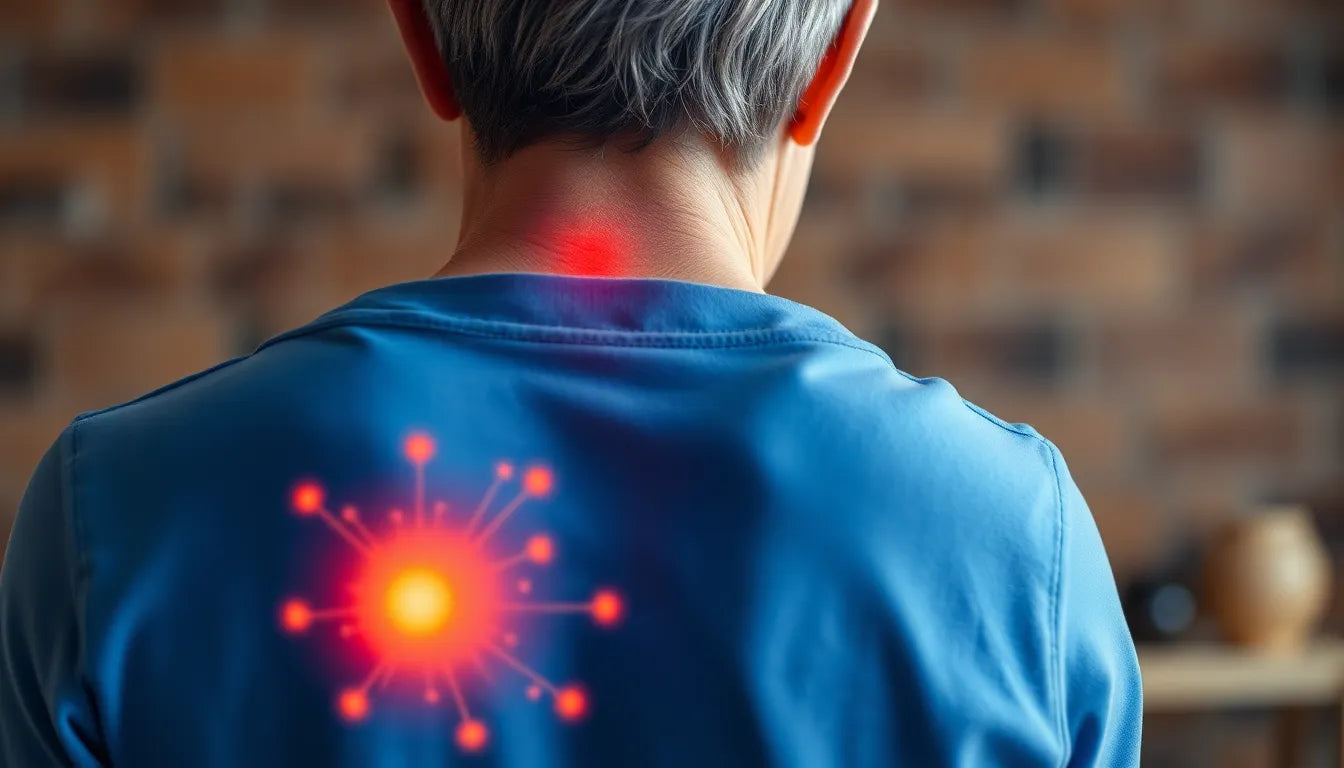Trampolining is an exhilarating activity that captivates both children and adults alike. The thrill of bouncing high into the air, performing flips, and experiencing the sensation of weightlessness is unmatched. Beyond the sheer joy it brings, trampolining offers a host of physical benefits. It enhances coordination, improves balance, and provides an excellent cardiovascular workout, making it a fun and effective way to stay fit.
the hidden risks of trampolining
However, amidst the excitement, there are hidden risks associated with trampolining, particularly when it comes to back health. Improper use of a trampoline can lead to back pain, a common issue that can affect anyone engaging in this activity without proper precautions. Back pain from trampolining often arises from incorrect landing techniques, overuse, or a lack of core strength, which can result in muscle strain or even more severe injuries.
This blog aims to delve into the causes of trampoline-induced back pain, exploring ways to prevent it and manage any discomfort effectively. Understanding these aspects is crucial for anyone looking to enjoy trampolining without the unwelcome consequence of back pain.
why understanding back pain prevention matters
Awareness and preventive measures are key to enjoying trampolining without pain. By understanding the potential risks and how to mitigate them, individuals can continue to enjoy the benefits of trampolining while minimizing the likelihood of injury. This blog will provide practical tips and expert advice to help you bounce safely and confidently.
Whether you're a seasoned trampoline enthusiast or a newcomer to the sport, knowing how to protect your back is essential. With the right knowledge and preparation, you can make the most of your trampoline sessions, ensuring that they remain a source of fun and fitness rather than discomfort. Stay tuned as we explore effective strategies to keep your back healthy while trampolining, allowing you to focus on the enjoyment and benefits of this dynamic activity.
common causes of back pain from trampolining
Trampolining, while enjoyable, can lead to back pain if not practiced with care. Understanding the common causes of back pain from trampolining is essential to prevent discomfort and injury. One of the primary causes is incorrect landing techniques. When landing improperly, the impact can cause muscle strain or spinal misalignment. To avoid this, it's crucial to focus on landing with bent knees and maintaining a neutral spine position. Practicing controlled landings can significantly reduce the risk of injury.
Another factor contributing to back pain is overuse and overexertion. Enthusiastic jumpers may not realize that excessive jumping without adequate rest can lead to overuse injuries. It's important to listen to your body and take breaks as needed. Incorporating rest periods into your trampolining routine not only helps prevent injuries but also enhances performance by allowing muscles to recover.
Additionally, having weak core muscles can increase the likelihood of back pain. The core muscles play a vital role in stabilizing the spine during jumps. Without adequate core strength, the spine is more susceptible to strain. To strengthen your core, consider incorporating exercises such as planks, bridges, and abdominal crunches into your fitness routine. A strong core not only supports your back but also improves overall trampolining performance.

Men's Posture Shirt™ - Black
Posture shirt with NeuroBand™ tech for back relief and improved posture, ideal for work and sports.

Women's Posture Shirt™ - Black
Patented shirt for better posture and muscle relief, helps reduce pain from daily activities or sport.
symptoms to watch out for
Recognizing the symptoms of trampoline-related back pain is crucial for timely intervention. Symptoms can range from mild to severe pain. Mild stiffness and discomfort may indicate minor muscle strain, while severe pain and swelling could suggest more significant injury. It's important to pay attention to these symptoms and take action accordingly. Below is a table outlining common symptoms and their corresponding severity levels:
| Symptom | Severity Level |
|---|---|
| Mild stiffness | Low |
| Moderate pain | Medium |
| Severe pain and swelling | High |
It's also important to differentiate between immediate and delayed onset of symptoms. Some individuals may experience back pain immediately after trampolining, while others might notice discomfort hours or even days later. Being aware of how and when symptoms manifest can aid in managing and treating the pain effectively.
effective treatment options
When it comes to treating trampoline-induced back pain, there are several effective options available. Initial care should focus on reducing inflammation and alleviating pain. Over-the-counter pain relief medications, such as ibuprofen or acetaminophen, can be helpful. Additionally, applying ice to the affected area within the first 48 hours can reduce swelling, while heat application afterward can relax tense muscles. Resting and minimizing physical activity are crucial to allow the body to heal.
In cases where pain persists or worsens, seeking professional help is advisable. A physiotherapist or chiropractor can provide a tailored rehabilitation program to address specific needs. These professionals can assess the condition, offer manual therapy, and recommend exercises to improve strength and flexibility. Their expertise is invaluable in ensuring a safe and effective recovery process.
By understanding the causes, symptoms, and treatment options for trampoline-related back pain, enthusiasts can take proactive steps to protect their spine and continue enjoying the benefits of trampolining. With the right knowledge and practices in place, trampolining can remain a fun and pain-free activity for everyone involved.
preventive measures for safe trampolining
Ensuring a safe and enjoyable trampolining experience involves taking several preventive measures. First and foremost, the use of safety equipment and supervision is crucial. Installing safety nets and pads around the trampoline can significantly reduce the risk of falls and injuries. Additionally, adult supervision is essential, especially when children are using the trampoline. This helps ensure that safety rules are followed and that any risky behavior is promptly addressed.
Another key aspect of safe trampolining is focusing on technique and training. Proper training can help individuals learn the correct way to jump and land, minimizing the risk of back pain. Before starting a trampoline session, it's important to engage in a warm-up routine to prepare the body for physical activity. Here are some effective warm-up exercises:
- Light jogging or marching in place to increase heart rate
- Dynamic stretches such as arm circles and leg swings
- Gentle twists to loosen the spine
- Core activation exercises like planks or bridges
Finally, maintaining a balanced use of the trampoline is essential to avoid overuse injuries. It's important to incorporate a variety of physical activities into your routine, ensuring that the body is not subjected to repetitive stress from trampolining alone. This balance helps prevent overexertion and supports overall fitness.
frequently asked questions
can children safely use trampolines without getting back pain?
Yes, children can safely use trampolines without experiencing back pain, provided they have proper supervision, safety measures are in place, and they are physically prepared. Ensuring children understand safe jumping techniques and the importance of warming up can greatly reduce the risk of injury.
what should I do if I experience back pain after trampolining?
If you experience back pain after trampolining, it's important to start with rest and over-the-counter pain relief. Applying ice to the affected area can help reduce swelling, while heat can relax tense muscles. If pain persists or worsens, consulting a healthcare professional is advisable to receive a tailored treatment plan.
how can I strengthen my core muscles to prevent trampoline-related injuries?
Strengthening your core muscles is key to preventing trampoline-related injuries. Engaging in exercises such as planks, bridges, and abdominal crunches regularly can build the necessary strength to support your spine and improve your overall trampolining performance.
are there any specific trampoline exercises that are safer for the back?
Yes, certain trampoline exercises are safer for the back. Low-impact bounces and controlled jumps are recommended to minimize strain. It's important to avoid flips and high-risk tricks without proper training, as these can increase the risk of injury.
By implementing these preventive measures and understanding the importance of technique and training, you can enjoy trampolining without the risk of back pain. Remember, awareness and preparation are key to a safe and fun trampoline experience. Whether you're a beginner or an experienced jumper, these tips will help you make the most of your time on the trampoline, ensuring it remains a source of joy and fitness.
Kilder
- RaskRask. (n.d.). "Rygspændinger og Rygsmerter." RaskRask.
- FS Fysio. (n.d.). "10 Almindelige Årsager til Kroniske Rygsmerter." FS Fysio.
- BUPL. (n.d.). "Trampolin Skader: Springer Sikkerheden Over." BUPL.
- Kiropraktor Lyngby. (n.d.). "Hold i Lænden hos Børn." Kiropraktor Lyngby.
- Rigshospitalet. (n.d.). "Fakta om Ryggen og Rygsmerter." Rigshospitalet.
- Sundheds Huset. (n.d.). "Hovedpine hos Babyer og Børn." Sundheds Huset.


















